Power Washing vs. Pressure Washing: Unveiling the Differences
Introduction
Power washing and pressure washing are both effective methods for cleaning surfaces, but they differ in their techniques and applications. Power washing involves the use of hot water and high pressure, while pressure washing typically uses cold water under high pressure. It’s essential to understand the distinction between the two methods to determine which is best suited for specific cleaning tasks.
Explanation of Power Washing and Pressure Washing
Power washing and pressure washing are often used interchangeably, but they have distinct differences. Power washing utilizes a combination of hot water and high pressure to remove dirt, grime, mold, mildew, and other contaminants from surfaces. On the other hand, pressure washing relies solely on high-pressure water to achieve similar cleaning results.
Importance of Distinguishing Between the Two
Understanding the difference between power washing and pressure washing is crucial for selecting the appropriate cleaning method for various surfaces and applications. Using the wrong technique can result in damage to delicate surfaces or ineffective cleaning. By knowing the distinctions, one can make informed decisions to achieve optimal cleaning results while preserving the integrity of the surface being cleaned.
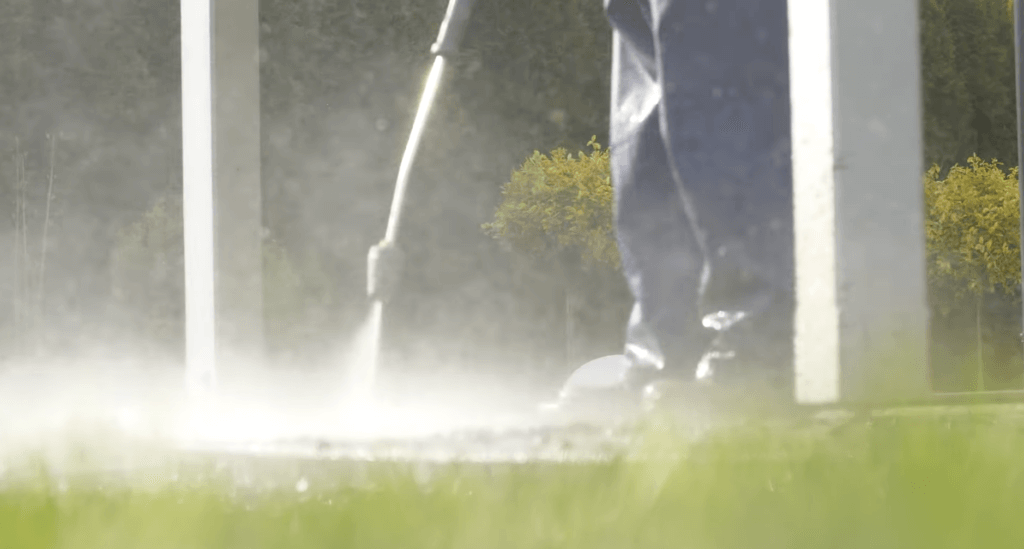
Definition of Power Washing
Explanation of Power Washing Equipment
Power washing equipment typically includes a pressure washer with a heating element to generate hot water. The heated water is then expelled through a nozzle at high pressure to remove dirt and grime from surfaces effectively. Additionally, power washers may have adjustable settings to regulate the temperature and pressure according to the cleaning requirements.
Use of Hot Water and High Pressure
Power washing distinguishes itself through the incorporation of hot water alongside intense pressure, a combination ideal for tackling ingrained grime and resilient stains. The application of heat enhances the breakdown of harsh residues and grease, surpassing the efficacy of cold water methods alone. This makes power washing a preferred choice for cleaning heavily soiled surfaces or areas harboring stubborn contaminants, ensuring a thorough and efficient cleaning process.
Applications and Benefits
Power washing, a popular method for cleaning outdoor surfaces, utilizes a potent blend of hot water and high pressure to effectively remove grime, dirt, and other contaminants from a variety of surfaces, including decks, driveways, and siding. This powerful technique not only enhances the appearance of surfaces but also aids in sanitization and restoration, ultimately prolonging their lifespan and maintaining their aesthetic appeal. Whether used for household maintenance or commercial cleaning, power washing stands as a versatile solution for achieving pristine surfaces and revitalizing outdoor spaces.
Definition of Pressure Washing
Explanation of Pressure Washing Equipment
Pressure washing equipment typically consists of a pressure washer, a powerful tool that emits a focused jet of cold water at elevated pressure levels. This concentrated stream effectively removes dirt, grime, algae, mold, and other accumulated debris from a variety of surfaces, including concrete, wood, metal, and plastic, without requiring additional heating mechanisms. The force generated by the pressure washer enables efficient cleaning, making it a versatile and convenient choice for both residential and commercial applications.
Use of High-Pressure Water Stream
Pressure washing is a cleaning method that harnesses the force of high-pressure water to effectively remove dirt, stains, and contaminants from various surfaces. Unlike power washing, which utilizes heated water, pressure washing relies solely on the sheer force of the water stream to achieve its cleaning results. This technique is highly versatile and can be used on a wide range of surfaces, including concrete driveways, decks, siding, and even vehicles, making it a popular choice for both residential and commercial cleaning applications.
Applications and Benefits
Pressure washing is versatile and suitable for a wide range of cleaning tasks, including removing dirt and grime from sidewalks, patios, fences, driveways, and outdoor furniture. It’s an efficient way to maintain the cleanliness and appearance of exterior surfaces, enhancing curb appeal and prolonging the lifespan of structures and fixtures.
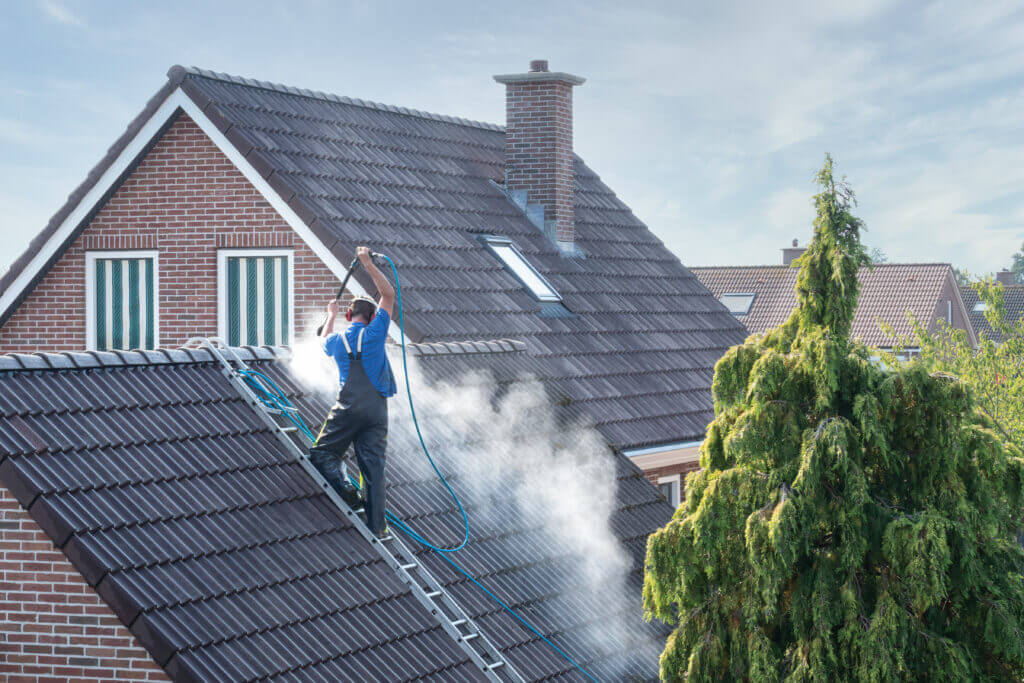
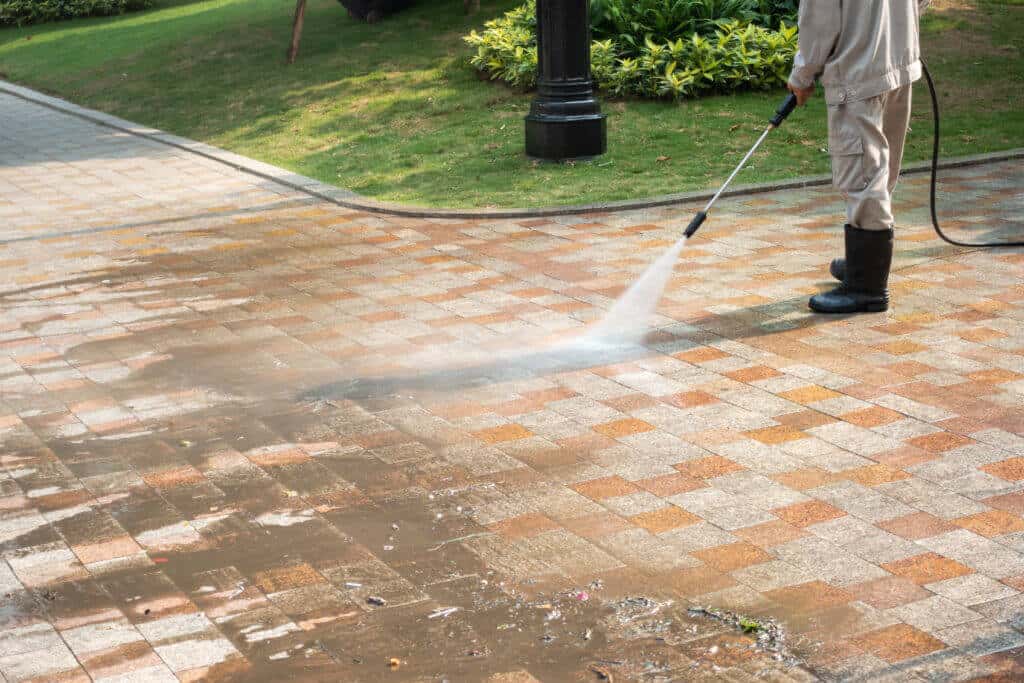
Key Differences
Temperature of Water Used
The primary difference between power washing and pressure washing lies in the temperature of the water used. Power washing utilizes hot water, while pressure washing uses cold water. The heat in power washing enhances cleaning efficiency, particularly for removing grease and oil stains.
Cleaning Power and Effectiveness
Power washing, distinguished by its use of hot water, surpasses pressure washing in tackling stubborn stains and contaminants. The application of heat aids in breaking down substances adhered to surfaces, enhancing the efficacy of cleaning. This process not only ensures a more thorough removal of grime but also provides a higher level of sanitation, resulting in a noticeably deeper clean compared to cold water pressure washing.
Suitable Surfaces and Applications
Power washing is best suited for surfaces that can withstand heat and pressure, such as concrete, brick, and metal. It’s ideal for heavy-duty cleaning tasks and removing stubborn stains. Pressure washing, on the other hand, is suitable for a broader range of surfaces, including wood, vinyl, and painted surfaces, making it a more versatile option for general cleaning and maintenance.
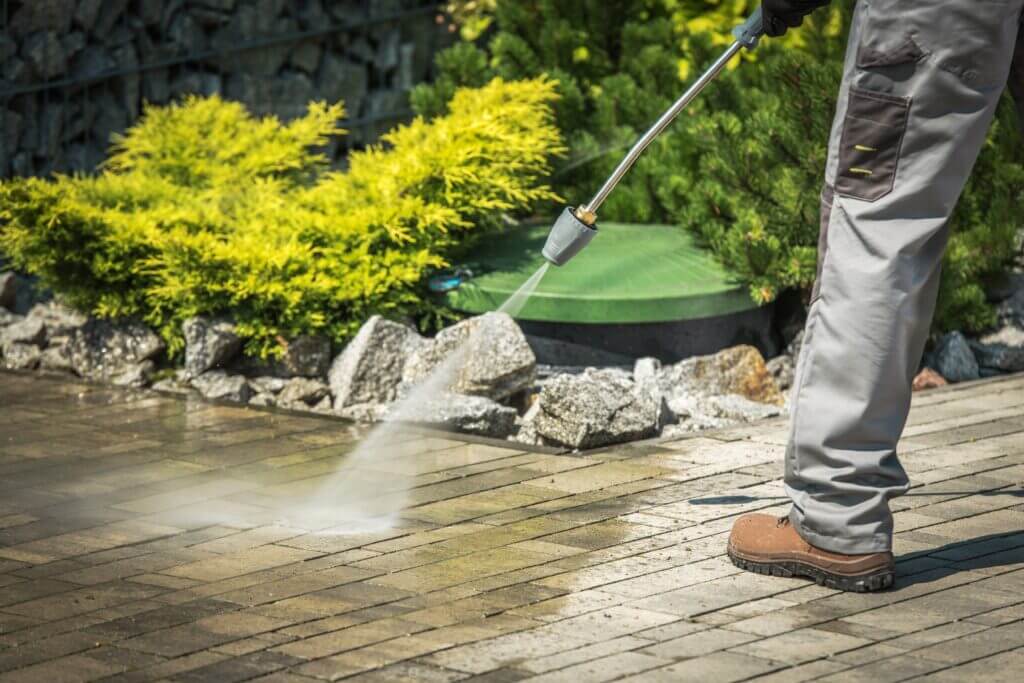
Similarities
Use of High-Pressure Water
Power washing and pressure washing are both effective methods for cleaning surfaces by utilizing high-pressure water streams to dislodge dirt, grime, and other contaminants. The intense force of the water helps to penetrate deep into porous surfaces, ensuring thorough removal of stubborn stains and buildup. Whether it’s for residential, commercial, or industrial applications, both techniques offer efficient solutions for restoring surfaces to their original cleanliness.
Cleaning Efficiency
Power washing and pressure washing, though distinct techniques, share a common goal of effectively cleansing surfaces. Regardless of whether hot or cold water is employed, both methods leverage high-pressure streams to efficiently eliminate dirt, stains, and unwanted growths like mold and mildew, thereby revitalizing surfaces to their pristine state. Their versatility makes them indispensable for tasks ranging from cleaning driveways and sidewalks to rejuvenating siding and outdoor furniture.
Applications in Various Industries
Both power washing and pressure washing find applications in residential, commercial, and industrial settings. From cleaning outdoor surfaces and vehicles to preparing surfaces for painting or sealing, these methods are widely used across different industries to maintain cleanliness, hygiene, and safety standards.
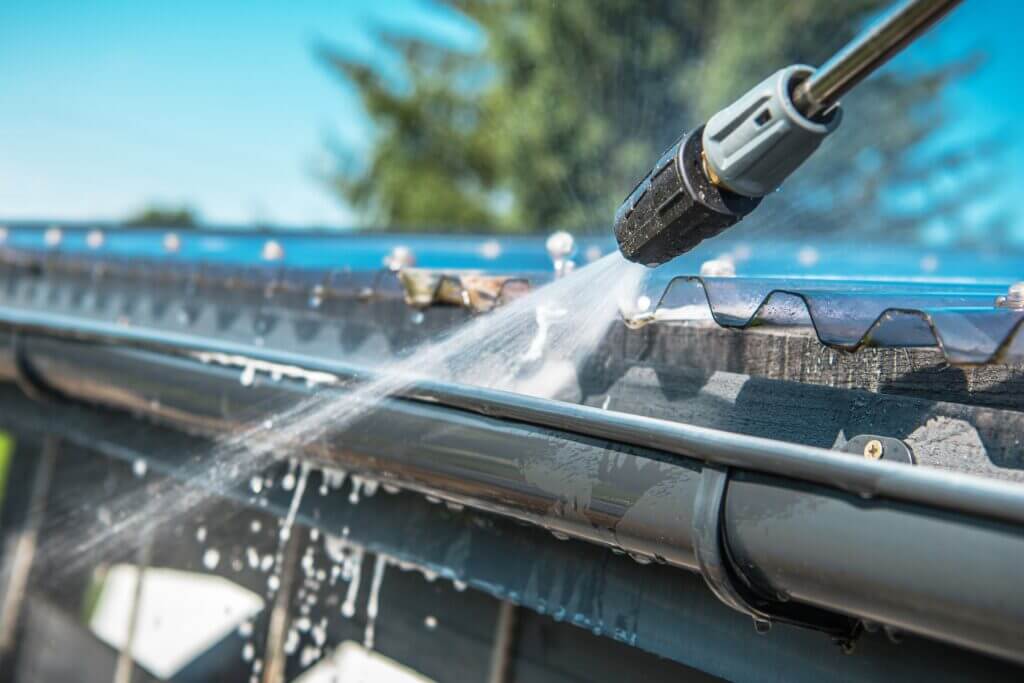
FAQs (Frequently Asked Questions)
Can power washing damage my surfaces?
Power washing, if not performed correctly, can damage certain surfaces such as wood, delicate masonry, and shingles. It’s essential to hire experienced professionals to mitigate the risk of damage.
Is pressure washing eco-friendly?
Pressure washing can be environmentally friendly when used with biodegradable detergents and water-saving techniques. Additionally, using pressure washing to maintain surfaces can prevent the need for harsh chemical treatments in the future.
How often should I power wash my home’s exterior?
The frequency of power washing depends on various factors such as climate, exposure to elements, and the presence of contaminants. Generally, it’s recommended to power wash your home’s exterior once a year to maintain its appearance and integrity.
Can pressure washing remove graffiti?
Pressure washing can effectively remove graffiti from certain surfaces, mainly if it’s performed promptly after the vandalism occurs. However, stubborn graffiti may require specialized cleaning solutions or additional treatments.
Is power washing suitable for all types of surfaces?
While power washing is highly effective for many surfaces, it may not be suitable for delicate materials such as untreated wood, asphalt shingles, or certain types of siding. It’s crucial to assess the surface material and consult with professionals to determine the appropriate cleaning method.
How does pressure washing benefit commercial properties?
Pressure washing can enhance the curb appeal and cleanliness of commercial properties, creating a positive impression on customers and visitors. Additionally, regular pressure washing maintenance can prolong the lifespan of exterior surfaces and prevent costly repairs.
Conclusion
Power washing and pressure washing both utilize high-pressure water to clean surfaces effectively, but their applications differ significantly. Power washing typically involves the use of hot water in addition to high pressure, making it ideal for removing tough stains, grease, and grime. On the other hand, pressure washing relies solely on high-pressure water and is better suited for routine maintenance tasks like cleaning driveways, sidewalks, and siding. Understanding these distinctions is crucial for choosing the right method for your specific cleaning requirements, ensuring optimal efficiency and safety throughout the process.
Remember: A clean house is a happy house!
